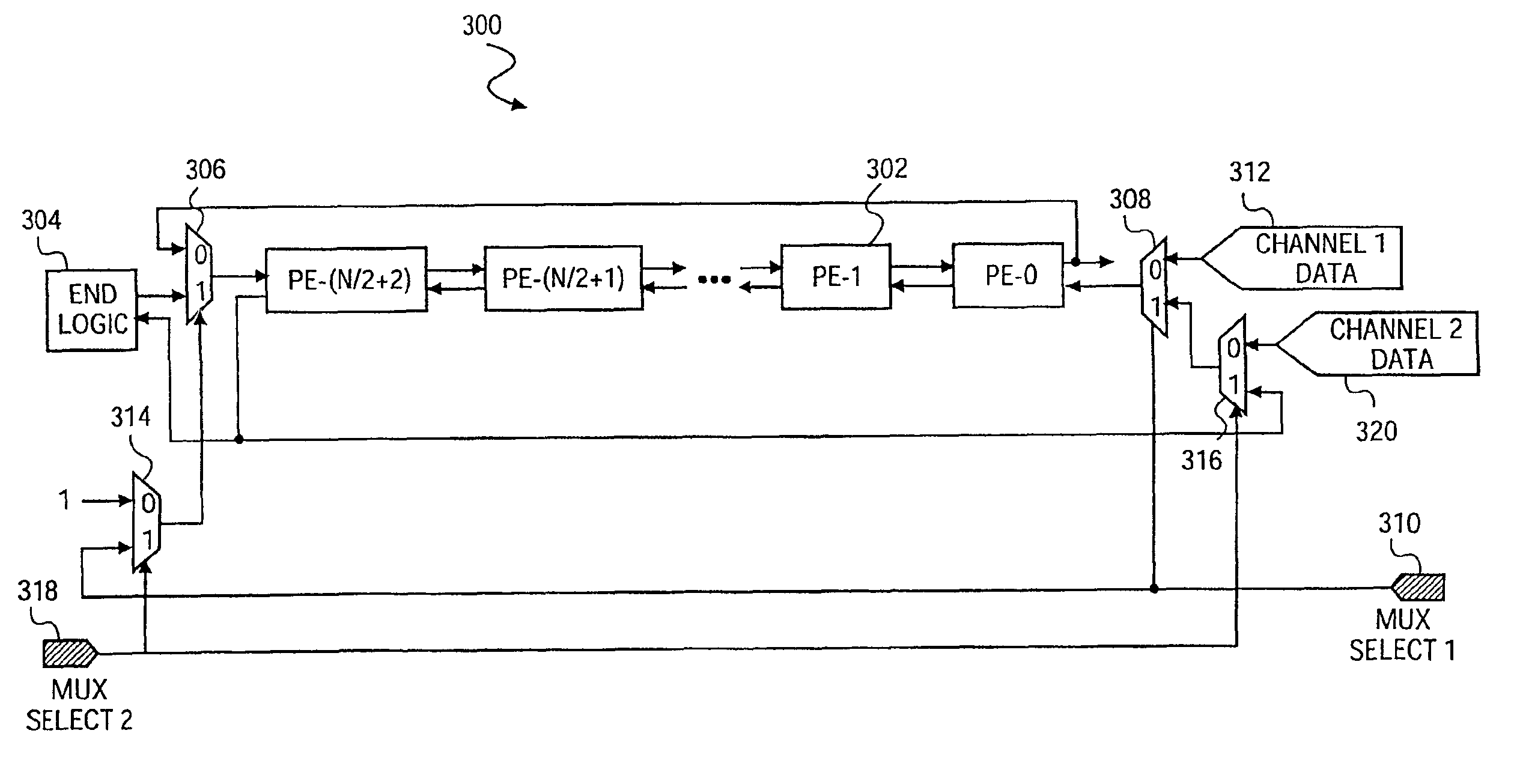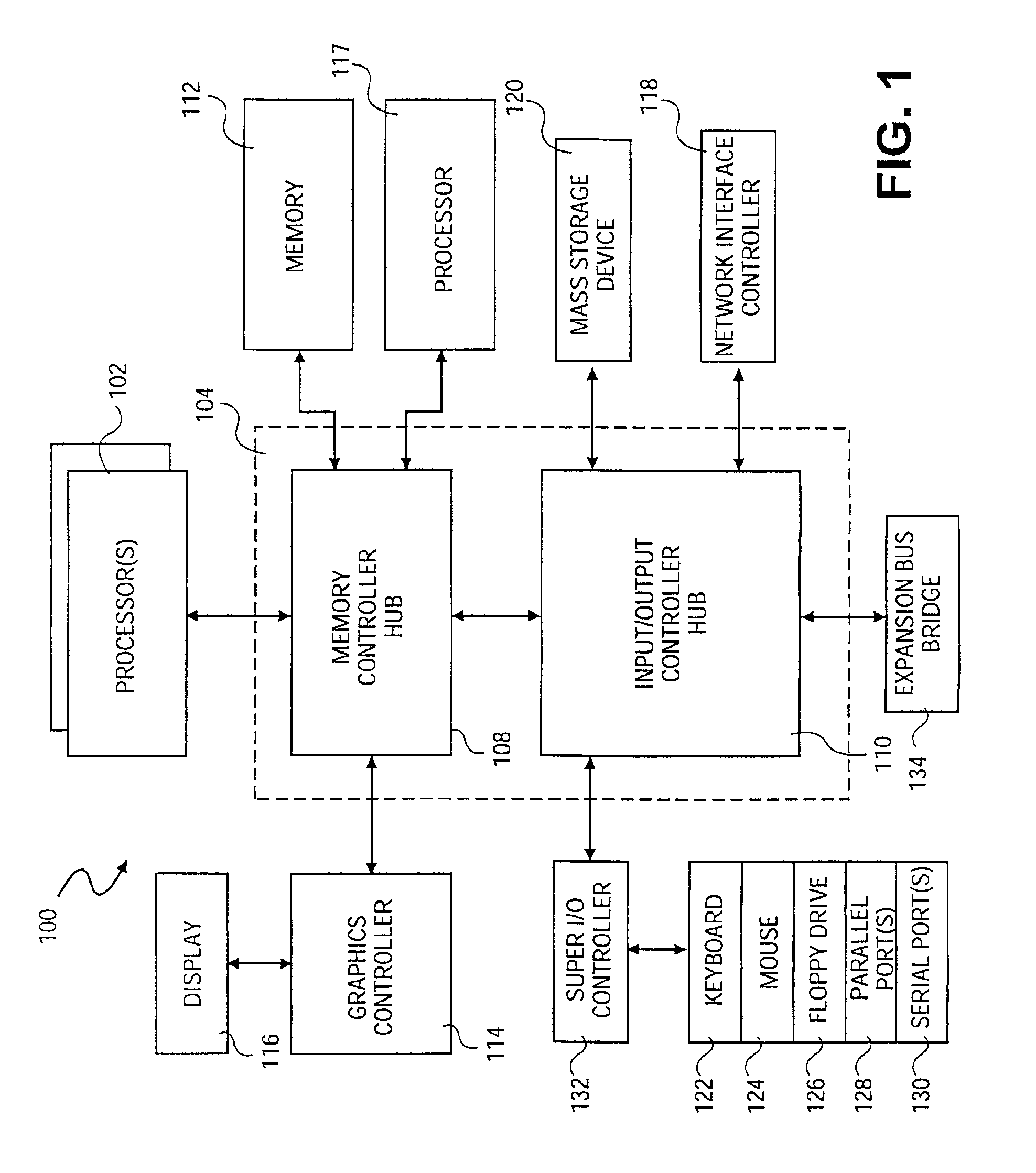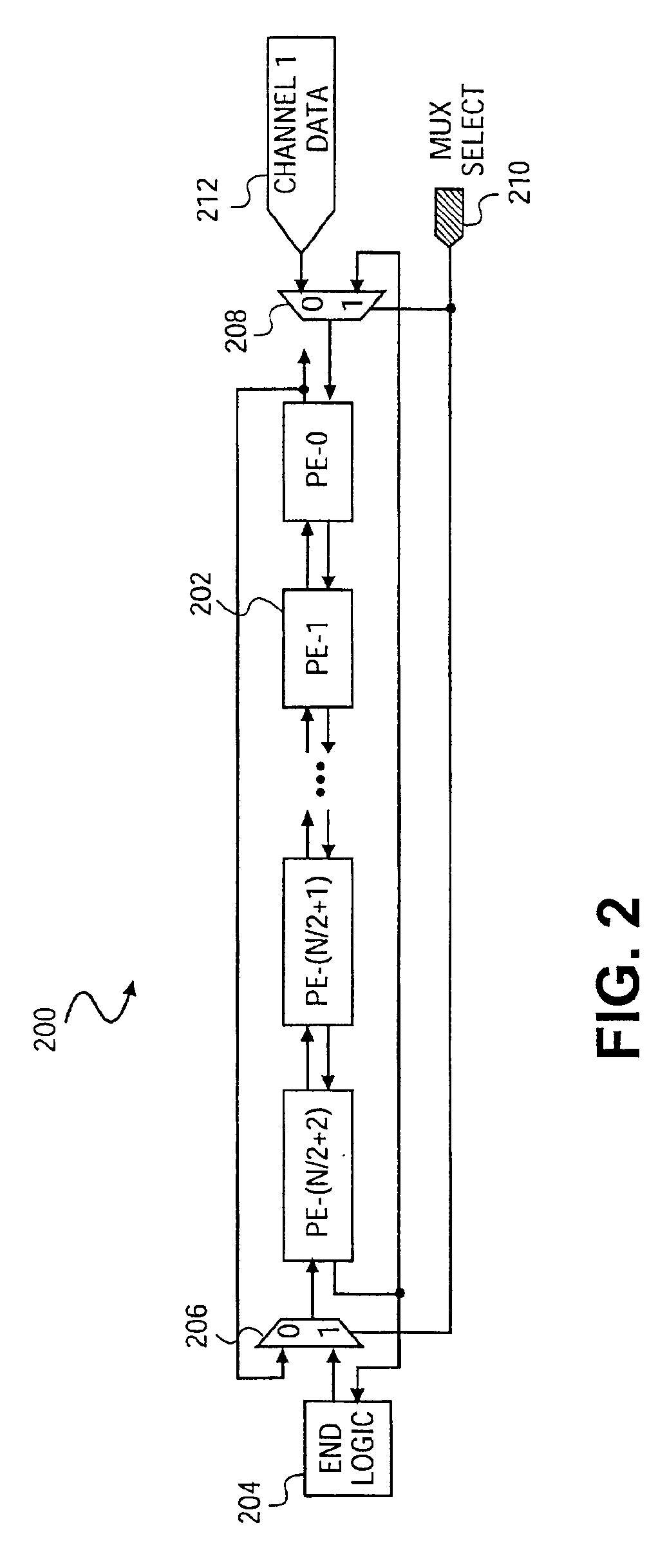Method and apparatus for performing modular multiplication
a technology of modular multiplication and multiplication methods, applied in the field of arithmetic processing and cryptography, can solve the problems of large space and hardware resources of modular multipliers used to perform operations on large-size operands such as those utilized in modular exponentiation-based cryptographic systems, and undesirable techniques for large integer numbers
- Summary
- Abstract
- Description
- Claims
- Application Information
AI Technical Summary
Problems solved by technology
Method used
Image
Examples
first embodiment
[0025]FIG. 2 illustrates a high-level block diagram of a modular multiplier 200 according to the present invention. In the illustrated embodiment, modular multiplier 200 includes a plurality of processing elements such as processing element 202, terminating or “end” logic 204, and a coupling device including a first multiplexer 206 and a second multiplexer 208 according to the present invention.
[0026]While a wide variety of techniques and hardware implementations may be used to implement modular multiplication, the depicted modular multiplier 200 embodiment comprises a Montgomery multiplier constructed as a linear systolic array of processing elements with each processing element processing some number of bits of a Montgomery multiplication operation. For example, each processing element in the embodiment depicted in FIG. 2 operates on 4 bits of a Montgomery multiplication operation at a time. Ordinarily, the number of processing elements required would be equal to the number of dig...
second embodiment
[0037]FIG. 3 illustrates a high-level block diagram of a modular multiplier 300 according to the present invention. Modular multiplier 300 of FIG. 3 is substantially similar to modular multiplier 200 depicted in FIG. 2, including a plurality of processing elements such as processing element 302, terminating or “end” logic 304, and a coupling device including a first multiplexer 306 and a second multiplexer 308 receiving a Channel 1 data source 312 and a first control signal, Mux Select 1310 as described with respect to FIG. 2 according to the present invention. However, modular multiplier 300 includes additional logic allowing the linear systolic array of processing elements to be selectively switched between at least two modes: a first, dual-channel mode where first and second independent computation channels of the linear systolic array are operably separated from one another and operate as two separate n-bit modular multipliers and a second, single, fed-back channel mode where th...
PUM
 Login to View More
Login to View More Abstract
Description
Claims
Application Information
 Login to View More
Login to View More - R&D
- Intellectual Property
- Life Sciences
- Materials
- Tech Scout
- Unparalleled Data Quality
- Higher Quality Content
- 60% Fewer Hallucinations
Browse by: Latest US Patents, China's latest patents, Technical Efficacy Thesaurus, Application Domain, Technology Topic, Popular Technical Reports.
© 2025 PatSnap. All rights reserved.Legal|Privacy policy|Modern Slavery Act Transparency Statement|Sitemap|About US| Contact US: help@patsnap.com



